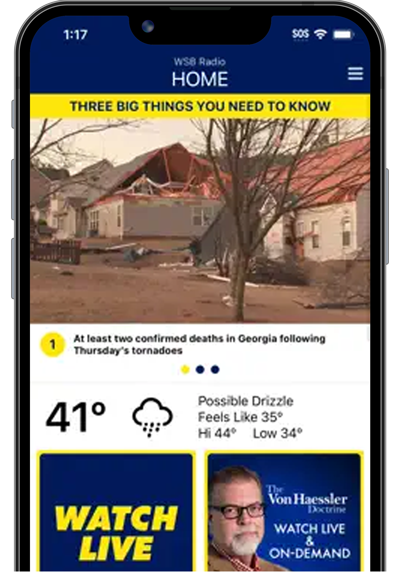Friday morning's earthquake, an event more commonly associated with California, was the first many Northeasterners had ever felt.
The temblor, which measured 4.8 on the Richter scale, was considered a shallow earthquake by the U.S. Geological Survey, meaning that it occurred at a depth of zero to 70 kilometers below ground. The USGS reported Friday morning that there was a 38% chance of an aftershock measuring magnitude 3.0 or more over the next week, and approximately eight hours later, one measuring 4.0 was recorded.
The energy released by an earthquake is weakened the greater the distance from where it occurs, so while the New Jersey earthquake occurred at a depth of 5 kilometers, the shaking it produced would have been even less if it had emanated from a deeper level.
But Scott Brandenberg, a professor of civil and environmental engineering at the UCLA Samueli School of Engineering, told Yahoo News that Friday’s earthquake is probably not indicative that longer-term earthquake activity is on the rise in the region.
What are the fault lines under New York and New Jersey?
Fault lines are fractures between blocks of rock in the Earth's crust, the layer closest to the surface. These lines allow tectonic plates to move and earthquakes occur when two plates slide past each other.
The Ramapo Fault System is the longest in the northeastern U.S., stretching from Pennsylvania to southeastern New York.
Map of the Ramapo Fault System: Earthquake epicenter at Lebanon, NJ. Hopewell Fault (red) and Flemington Fault (light blue) join the Ramapo (yellow) fault near the quake epicenter. pic.twitter.com/KiBHAYGaY2
— Aaron Astor (@AstorAaron) April 5, 2024
“It’s pretty inactive,” Brandenberg told Yahoo News. “The reason why earthquakes are rare here is that the central and eastern U.S. is considered a stable continental region that is far away from the plate boundaries where tectonic plates move relative to each other.”
New Jersey has had several small earthquakes since the end of 2020, but they were all of a magnitude of less than 2.5, which barely registers, according to Michigan Tech University.
Since 1957, the USGS has logged 188 earthquakes with a magnitude of 2.5 or higher that have occurred within a 250-mile radius of New York City. The earthquake on Friday had the third-highest magnitude out of the data set.
Are fault lines monitored?
The USGS maintains several monitoring instruments around the country for known fault lines and volcanos. Data from these measurements is transmitted in real-time to researchers in California. While the fault lines are being monitored, scientists cannot predict when earthquakes will occur. Researchers can review scientific data and calculate probabilities for future earthquakes, but a short-term earthquake prediction method does not exist.
Is the Northeast’s infrastructure built to sustain earthquakes?
“There are earthquake building codes throughout the United States, so every structure is built to withstand some shaking level,” Brandenberg explained. “Other hazards, like storms, pose more risk than earthquakes.”
In terms of underground public transportation systems — with New York City having one of the oldest and largest transit systems in the world — Brandenberg again evinced little concern.
“Underground structures, like subways, tend to perform pretty well during earthquake-shaking,” he said. “There are potential problems if the fault ruptures all the way to the surface, but that's unlikely for the magnitude of earthquakes that tend to occur in the Northeast.”








